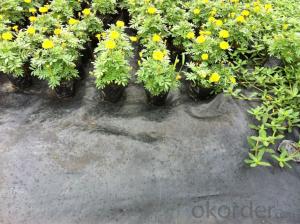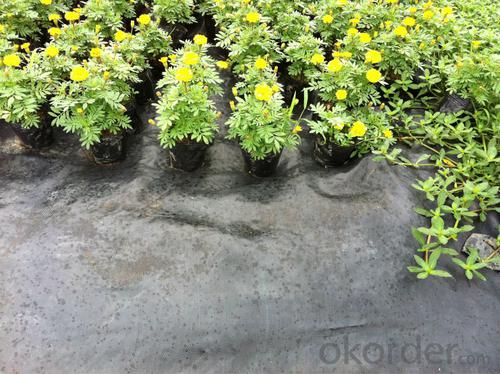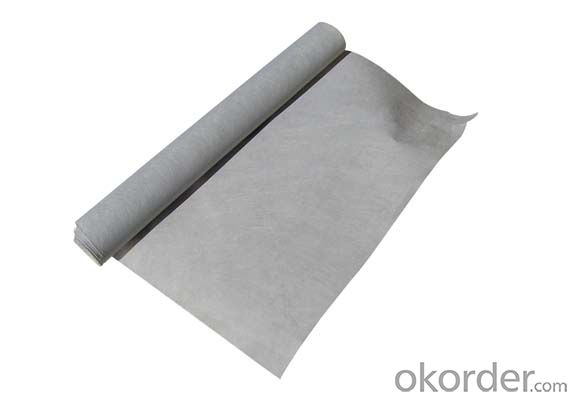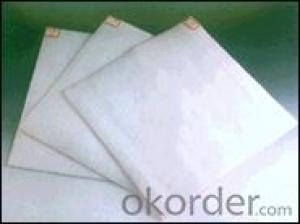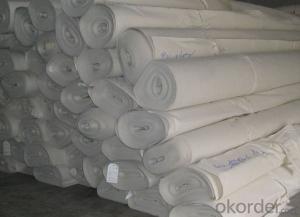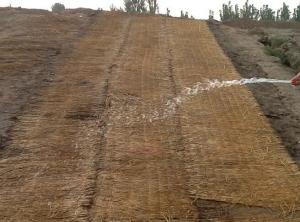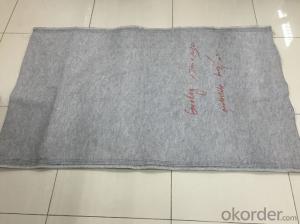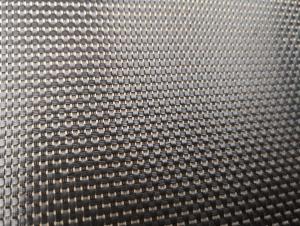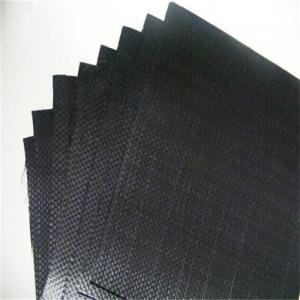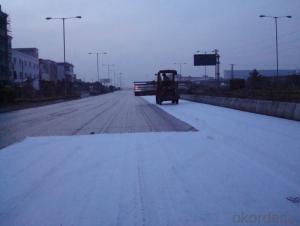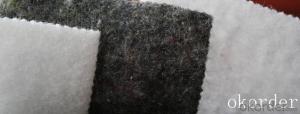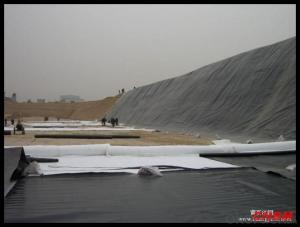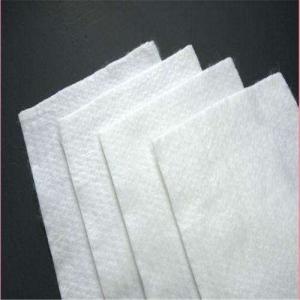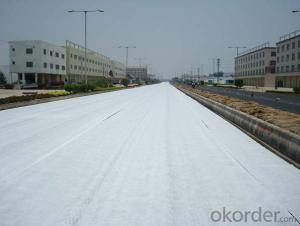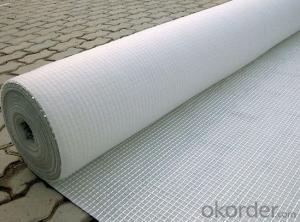Dot 2 Geotextile for Road Construction/Landscape/Groundcover
- Loading Port:
- China main port
- Payment Terms:
- TT OR LC
- Min Order Qty:
- 5000 m²
- Supply Capability:
- 1000000 m²/month
OKorder Service Pledge
OKorder Financial Service
You Might Also Like
Landscape Geotextile Introduction
Landscape Geotextiles are composed from synthetic polypropylene/polyester fibres through a mechanical process of needling the fabric and adding, when necessary, a thermo fused process, resulting in a uniform porous structure with excellent tensile strength and chemical deterioration.
Type: 1. Wovens & knitted: use various fibre types in different combinations.
2. Non-wovens: staple or continuous fibres that are heat treated or needlepunched to “fix” fibres relative to each other.
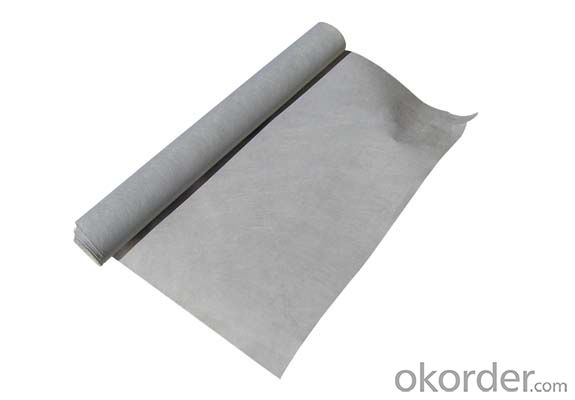
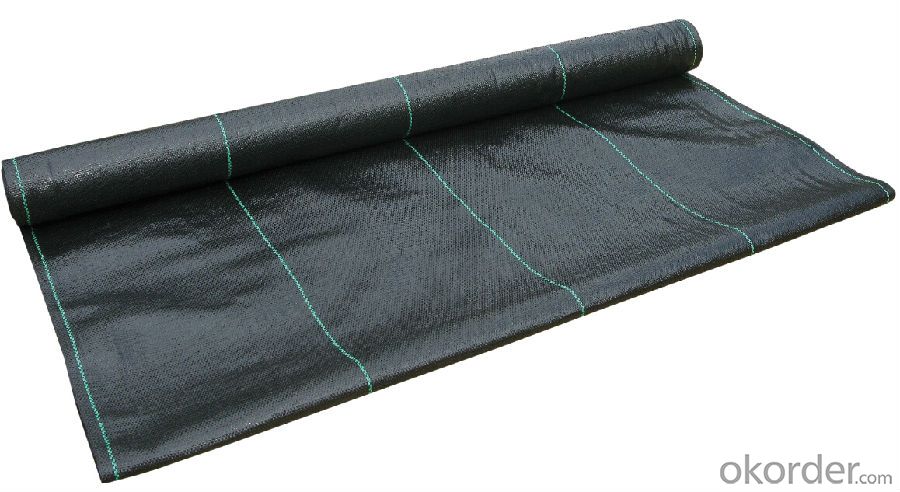
Landscape Geotextile Specification
1) Weight / Mass: 75g/m2-400g/m2 .
2) Width: Within 8 m (1m-8m)
3) Length: 50m-100m/roll (as request)
4) Material: PP
5) Color: Black , white , grey, others
6) The biggest geotextile manufacturer/factory in China for many years . The equipment is introduced from Germany.
7) This geotextile can be made of polypropylene (PP).
8) The mass is available from 75g/m2 to 400g/m2 and the width available from 1.0m-8m, monolayer or multilayer (reinforcement geotextiles), long fiber or short fiber.
9) Color: all kinds of color are available. The annual production ability is 10 million square meters.
10) The fabric can also be heat treated by infrared at customer's requirements. Our geotextile are UV stabilized to give protection against aging under exposure to natural ultra-violet light.
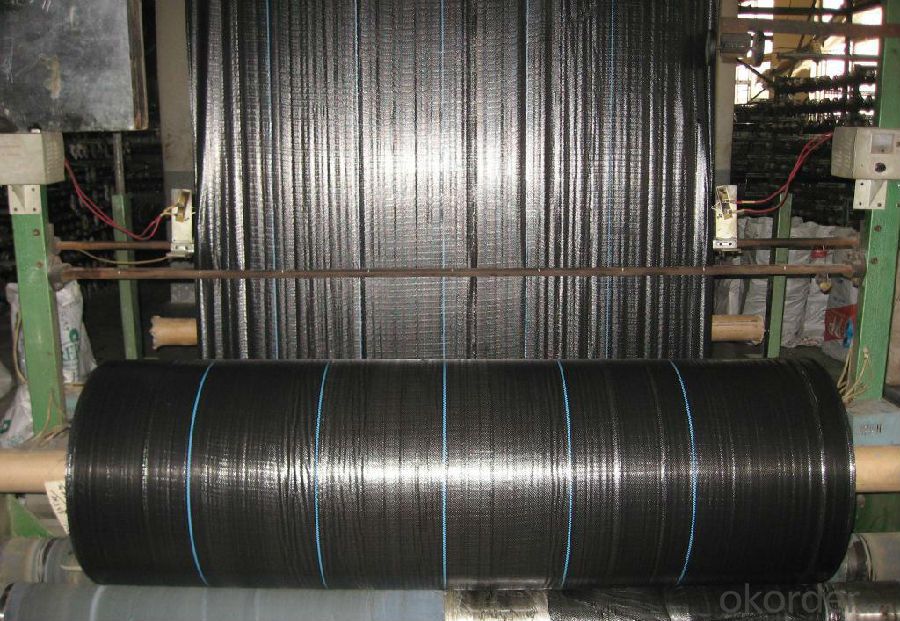
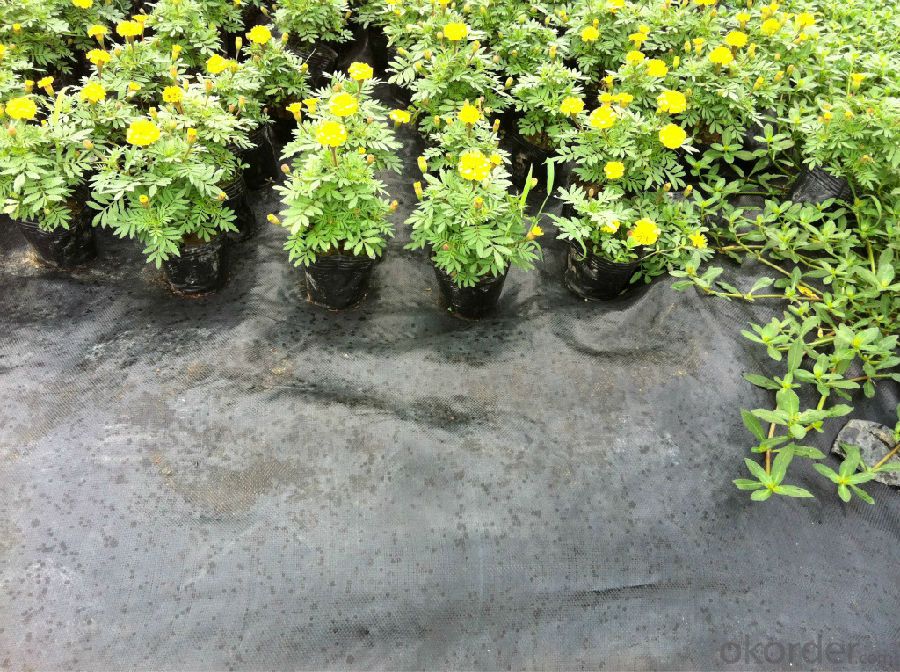
Landscape Geotextile Application
1) Filtration
The filtration layer of the dykes, river canal, seacoast, concrete slope, retaining walls. At the same time of preventing the clay granule from passing, it allows the water and the gas pass through freely.
2) Separation:
The isolation of the railway dregs and the roadbed, roadbed and the soft base, surface of the airdrome and parking lot and the groundsill, different dam materials. It isolates the soil and the gravel of two kinds different granule pathway from the groundsill or other buildings.
3 )Reinforcement:
The highway, railway, soil-stone dam, breakwater, airport, backfill soil of retaining wall, slope protection, etc in which distributes the earth stress, prevents the side-displacement of the earth body and improves the earth body stability.
4 )Protection
It prevents the bank from being washed out, protects the bank and the bottom, prevents the water and soil from being washed away.
FAQ:
Q1: What is your minimum order quantity?
A:The minimum order quantity is 5000 ,but it is negotiable.
Q2:What is your payment terms?
A: T/T,Western Union,Paypal,L/C...
Q3:What is your delivery time?
A:Production time usually costs 2-20 days.
Waiting to cooperate with you!
- Q: How much is the price of anti-geotextile?
- In the actual engineering procurement, generally between the two geotextiles need about> 250px lap, so the procurement is usually based on the actual area plus 15% to 20% loss. Hongxiang new material Li Qian geotextile price is also required according to the specific needs of the project to specify the model, the specific offer.
- Q: What are the key differences between woven and nonwoven geotextiles?
- Woven geotextiles are made by weaving individual threads together to create a strong and durable fabric, while nonwoven geotextiles are made by bonding fibers together using heat, chemicals, or mechanical processes. Woven geotextiles have high tensile strength and are commonly used for soil stabilization, erosion control, and separation of different soil layers. On the other hand, nonwoven geotextiles have excellent filtration and drainage properties, making them suitable for applications such as filtration, separation, and protection. Overall, the key differences between woven and nonwoven geotextiles lie in their manufacturing process, physical properties, and intended usage.
- Q: How do geotextiles contribute to the sustainability of construction projects?
- Geotextiles contribute to the sustainability of construction projects in several ways. Firstly, they can be used as a substitute for traditional materials, such as gravel or sand, which reduces the demand for natural resources and minimizes environmental impact. Secondly, geotextiles improve soil stability and prevent erosion, ensuring the longevity of structures and reducing the need for costly repairs or replacements. Additionally, these textiles can enhance the efficiency of drainage systems, leading to reduced water consumption and improved water quality. Overall, geotextiles promote sustainable construction practices by conserving resources, enhancing durability, and minimizing environmental degradation.
- Q: Performance and Application of Impervious Geotextile
- Anti-seepage geotextile has excellent water permeability, filterability, durability, can be widely used in railways, highways, sports museum, dams, hydraulic construction, then hole, coastal beach, reclamation, environmental protection and other projects. Mainly staple acupuncture non-woven geotextile and split film woven geotextile. Anti-seepage geotextile function: 1. The use of geotextiles good permeability and water permeability, so that water through, so as to effectively remove the loss of sand. 2. Geotextile has a good water conductivity, it can form a drainage channel within the soil, the soil structure of the excess liquid and gas efflux. 3. Using geotextile to enhance the soil tensile strength and resistance to deformation, enhance the stability of the building structure to improve the quality of soil. 4. Effective focus will be concentrated diffusion, transmission or decomposition, to prevent soil damage by external forces. 5. to prevent the upper and lower gravel, soil and concrete mixed between. 6. Mesh is not easy to plug - due to the formation of amorphous fibrous tissue structure and strain and mobility. 7. High permeability - under the pressure of soil water, can still maintain a good permeability 8. Corrosion resistance - to polypropylene or polyester and other chemical fiber as raw materials, acid and alkali, no corrosion, no moth, antioxidant. 9. Construction is simple - light weight, easy to use, simple construction. Anti-seepage geotextile characteristics High anti-puncture strength, large coefficient of resistance to aging performance, to adapt to the environmental temperature range Excellent excellent anti-drainage performance for water conservancy, chemical, construction, transportation, subway, tunnel, garbage disposal and other projects
- Q: Filament, preferably concrete construction
- Tianhai new material filament geotextile case analysis of water conservancy projects: seawall, river embankment, lake embankment project; reservoir reinforcement project; reclamation project; flood control and rescue. Highway and railway engineering: soft foundation reinforcement treatment; slope protection; road anti-reflective crack structure layer; drainage system; green isolation zone. Electrical engineering: nuclear power plant basic engineering; thermal ash dam project; hydropower project.
- Q: What are the advantages of using geotextiles in wetland restoration projects?
- There are several advantages of using geotextiles in wetland restoration projects. Firstly, geotextiles provide effective erosion control by stabilizing the soil and preventing it from washing away during heavy rainfall or flooding. This helps in maintaining the wetland's structure and preventing further degradation. Secondly, geotextiles act as a barrier, preventing the migration of harmful substances such as pollutants or excess nutrients from adjacent areas into the wetland, thus protecting its ecological integrity. Additionally, geotextiles can enhance vegetation growth by retaining moisture in the soil, promoting root development, and preventing weed growth. This ultimately contributes to the overall success of wetland restoration efforts.
- Q: PET geotextile is what?
- PET for the polyester on behalf of the name, PET geotextile is also divided into many kinds, such as: broken geotextile, filament geotextile, filament weaving, etc., I understand only these. Look at what you mean.
- Q: Geotextile special staple fiber where needed
- Geotextile special staple fiber where needed
- Q: Can geotextiles be used in agricultural applications?
- Yes, geotextiles can be used in agricultural applications. They are commonly employed to control erosion, improve soil stabilization, and aid in drainage systems in agricultural fields. Geotextiles can help retain soil moisture, prevent weed growth, and protect crops from wind and water damage.
- Q: How do geotextiles help with reinforcement of geosynthetic clay liner slopes?
- Geotextiles provide reinforcement to geosynthetic clay liner slopes by adding tensile strength and stability to the structure. They act as a barrier against soil erosion and prevent the clay liner from sliding or slumping. Geotextiles also enhance the overall performance and longevity of the slope by distributing load and reducing stress on the liner.
Send your message to us
Dot 2 Geotextile for Road Construction/Landscape/Groundcover
- Loading Port:
- China main port
- Payment Terms:
- TT OR LC
- Min Order Qty:
- 5000 m²
- Supply Capability:
- 1000000 m²/month
OKorder Service Pledge
OKorder Financial Service
Similar products
Hot products
Hot Searches
Related keywords
